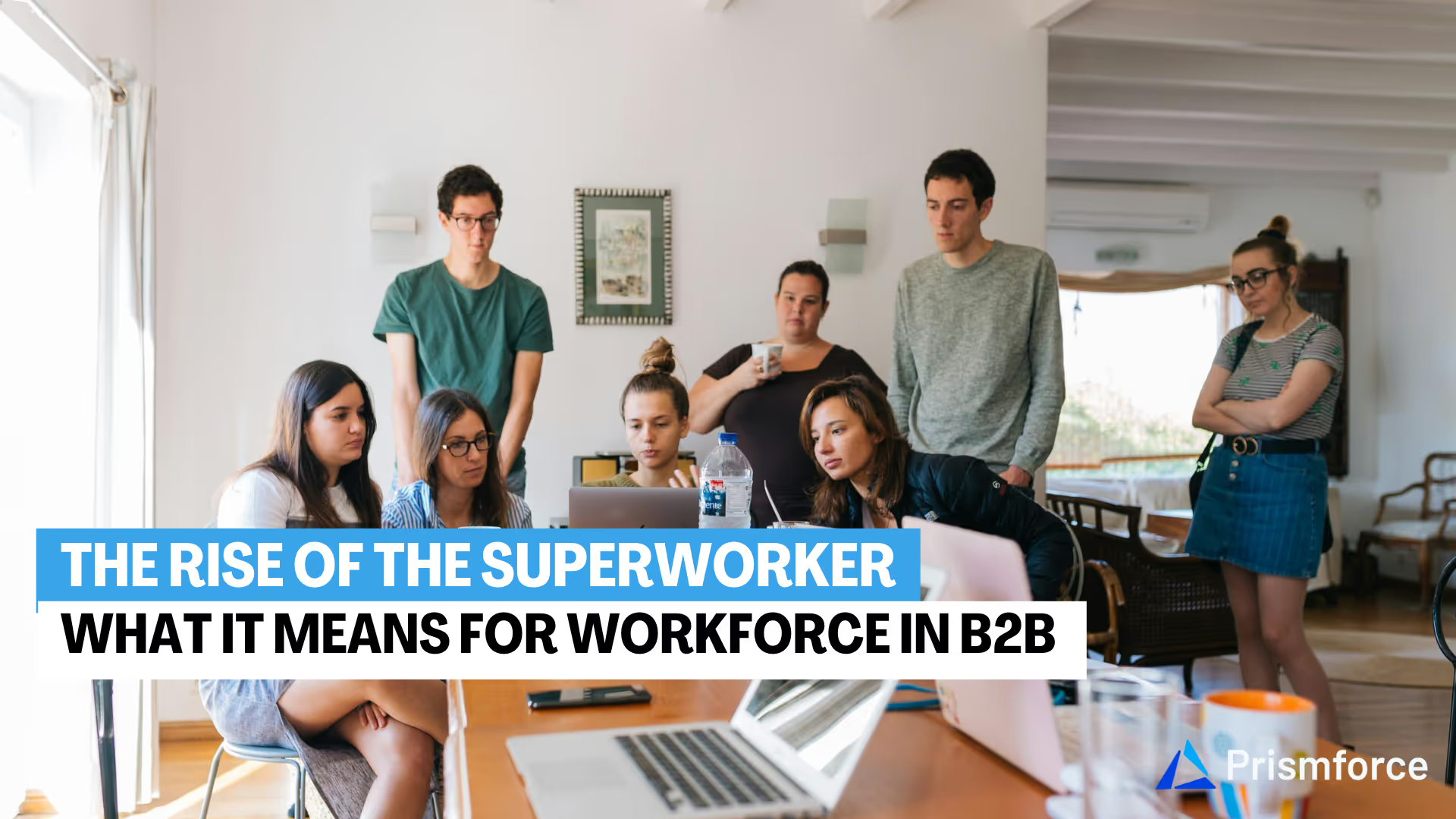
We are witnessing a curious contradiction in the labor market: even with high employment rates, CHROs and HR leaders are grappling with a perplexing challenge—persistent talent shortages across industries. A staggering 75% of employers globally report difficulty filling roles. This baffling disconnect between a seemingly abundant labor pool and a persistent talent shortage has become known as the CHRO's paradox.
This paradox raises critical questions about the alignment between workforce skills and organizational needs. On the surface, a low unemployment rate might suggest a healthy job market, but the reality is far more complex. Many organizations struggle to fill key roles with the right talent, leading to significant HR challenges. This article aims to delve into this paradox, exploring the underlying reasons behind this phenomenon and shedding light on the strategies HR leaders can adopt to circumvent it.
Understanding Talent Shortages
Talent shortages have become a defining feature of today's job market, presenting significant challenges for organizations across various industries. At its core, a talent shortage occurs when the demand for specific skills and expertise far exceeds the supply of qualified candidates. This gap is particularly evident in sectors that rely heavily on specialized knowledge and technical abilities.
Key industries most affected by talent shortages include:
- Technology: High demand for roles such as data scientists, cybersecurity experts, and software developers, but a limited supply of qualified candidates.
- Healthcare: Critical need for nurses, medical specialists, and healthcare IT professionals, with shortages impacting patient care and service delivery.
- Engineering & Manufacturing: Companies struggle to find talent with expertise in advanced manufacturing techniques and sustainable practices.
Factors Contributing to the Talent Shortage
The persistent talent shortage in today’s job market is driven by several interrelated factors, each exacerbating the challenges faced by CHROs and HR leaders. Understanding these factors is key to developing effective strategies for closing the skills gap and securing the right talent.
Skills Mismatch
One of the primary contributors to talent shortages is the growing disconnect between the skills employers need and the skills available in the labor market. As industries evolve, the demand for specialized roles requiring niche skills has surged.
For example, the rise of digital transformation initiatives has created a strong demand for professionals skilled in cloud computing, cybersecurity, and data analytics. However, the supply of workers proficient in these areas has not kept pace.
According to McKinsey, 87% of companies are experiencing a skills gap or expect to face one within the next few years. Moreover, more than 85 million jobs could go unfilled because there aren’t enough skilled people to take them. This mismatch between job requirements and available talent is a significant driver of the ongoing talent shortage.
Technological Advancements
Rapid technological advancements have further complicated the talent landscape. Innovations in automation, artificial intelligence (AI), and machine learning are transforming job roles at an unprecedented pace. While these technologies offer significant benefits, they also require new skill sets that the current workforce may lack.
A survey found that 62% of executives believe they will need to retrain or replace more than a quarter of their workforce by 2030 due to automation and AI. This speed of change often outpaces the ability of organizations to upskill their employees, widening the gap between the skills needed and those available.
Demographic Shifts
Demographic changes are another critical factor contributing to talent shortages. An aging workforce means that many experienced professionals are retiring, taking with them valuable knowledge and expertise. This is particularly acute in industries like manufacturing and engineering, where years of experience are often crucial. Additionally, generational differences in skillsets and job expectations further complicate the talent landscape.
Younger generations may possess strong digital skills but lack the industry-specific knowledge that older workers have. Conversely, older workers may have deep industry experience but struggle with new technologies, creating a gap that is difficult to bridge.
Economic Factors
Economic growth, while generally positive, can also contribute to talent shortages by increasing the demand for labor faster than the supply can grow. When economies expand, businesses ramp up hiring to meet increased demand, leading to a tighter labor market and more competition for qualified candidates.
Moreover, while unemployment rates have been low, underemployment remains an issue, where individuals are working in roles that do not fully utilize their skills or potential. This underemployment can mask the true extent of talent shortages, as these workers are technically employed but not in roles that align with their qualifications or career aspirations.
The CHRO's Role in Addressing the Paradox
In the face of persistent talent shortages, the role of the CHRO is more critical than ever. To navigate this paradox, CHROs must take a strategic, multifaceted approach that not only addresses immediate talent needs but also prepares the organization for future challenges. Here’s how CHROs can lead the charge:
Strategic Workforce Planning
Aligning talent strategies with business goals is fundamental to overcoming the talent shortage paradox. Strategic workforce planning involves understanding the organization’s long-term objectives and ensuring that the talent in place can drive those goals forward.
CHROs must take proactive measures to identify potential skills gaps before they become critical issues. This requires continuous monitoring of industry trends, technological advancements, and internal workforce capabilities. For example, scenario planning can help anticipate future skills needs and inform recruitment, training, and development efforts.
By aligning talent strategies with broader business objectives, CHROs can ensure that their organizations remain competitive and agile.
Investment in Upskilling and Reskilling
One of the most effective ways to bridge the skills gap is through investment in upskilling and reskilling programs. Continuous learning initiatives not only equip employees with the skills needed for emerging roles but also foster a culture of growth and adaptability.
For instance, AT&T’s Future Ready initiative, which invested over $1 billion in employee training, successfully reskilled thousands of employees for new roles in technology and innovation. Such programs demonstrate that with the right support, organizations can transform their existing workforce into a powerful engine for future growth.
CHROs must champion these initiatives, ensuring they are aligned with both the company’s needs and employees’ career aspirations.
Building a Resilient Talent Pipeline
Attracting and retaining top talent is essential to building a resilient talent pipeline. This involves not only recruiting the right candidates but also creating an environment where talent can thrive and grow. To achieve this, CHROs should focus on strategies that enhance employee engagement, satisfaction, and loyalty.
Moreover, leveraging diversity and inclusion initiatives can significantly widen the talent pool. A diverse workforce brings a broader range of perspectives and skills, driving innovation and better decision-making. Companies like Microsoft and Salesforce have seen substantial benefits from their diversity and inclusion efforts, not only in terms of talent acquisition but also in overall company performance.
By prioritizing these strategies, CHROs can build a talent pipeline that is both resilient and aligned with the organization’s long-term goals.
Transforming CHRO's Challenges into Opportunities with Prismforce
The talent shortage paradox poses a significant challenge for CHROs and HR leaders. Despite high employment rates, economic and technical factors have all contributed to a widening skills gap. This leaves CHROs with the daunting task of aligning talent strategies with business goals while simultaneously addressing immediate skills shortages. The pressure to not only find but also retain the right talent is immense, and without the right tools and strategies, organizations risk falling behind.
Prismforce offers a powerful solution to these challenges, equipping CHROs with the tools they need to effectively navigate the talent war. By leveraging AI-driven insights and robust skill management capabilities, Prismforce empowers organizations to build a workforce that is both agile and future-ready. Here’s how Prismforce addresses the key issues:
- Strategic Workforce Planning: Align talent strategies with business goals through real-time insights into skill inventory and data-driven decision-making.
- Upskilling and Reskilling: Bridge the skills gap with targeted learning paths and personalized development plans that keep your workforce competitive.
- Talent Pipeline Resilience: Enhance internal mobility and optimize recruitment with an internal talent marketplace, reducing reliance on external hires and improving employee retention.
With Prismforce, CHROs can turn the talent shortage paradox into an opportunity for growth, ensuring their organizations are equipped to thrive in a rapidly changing world.





